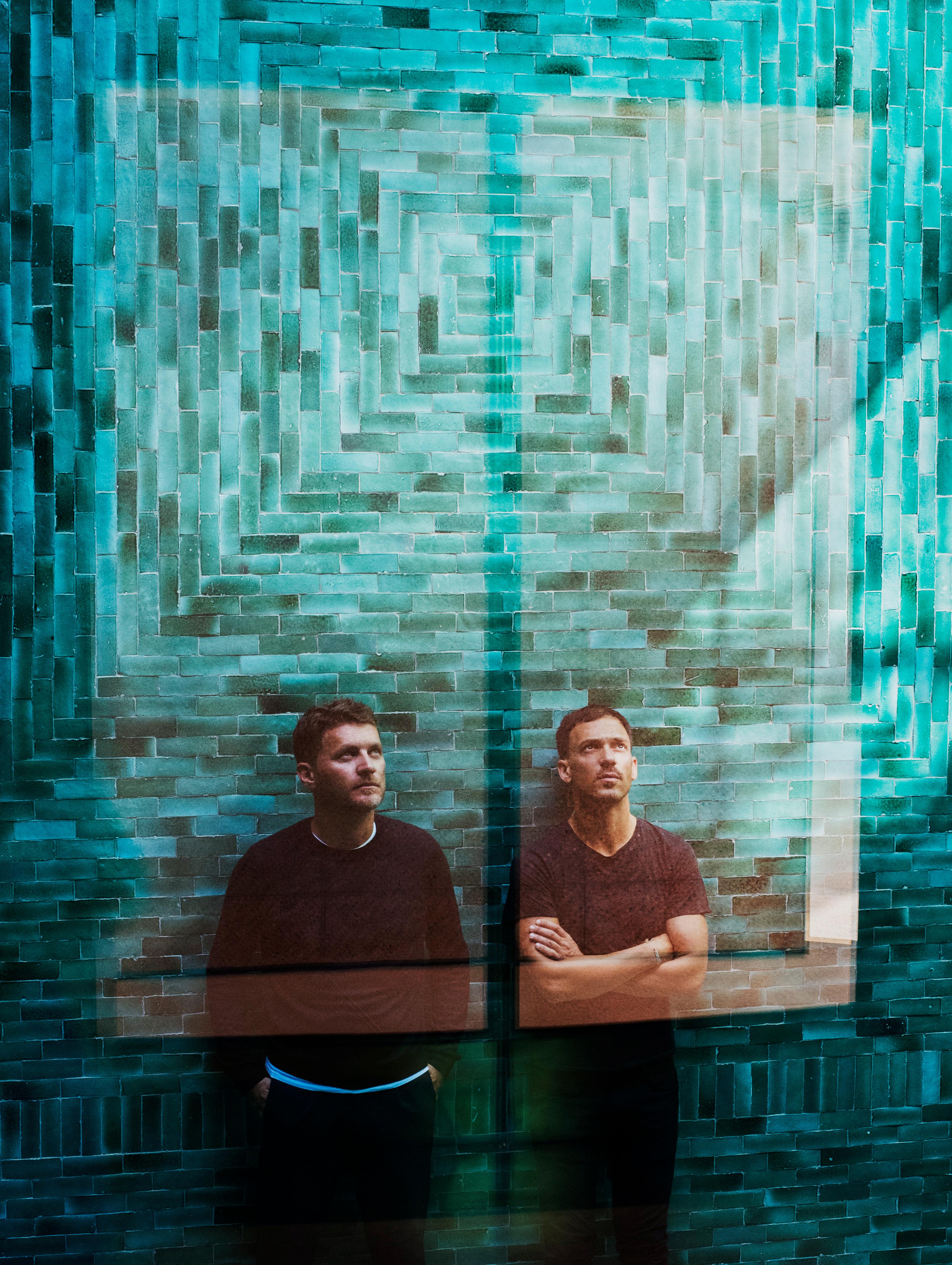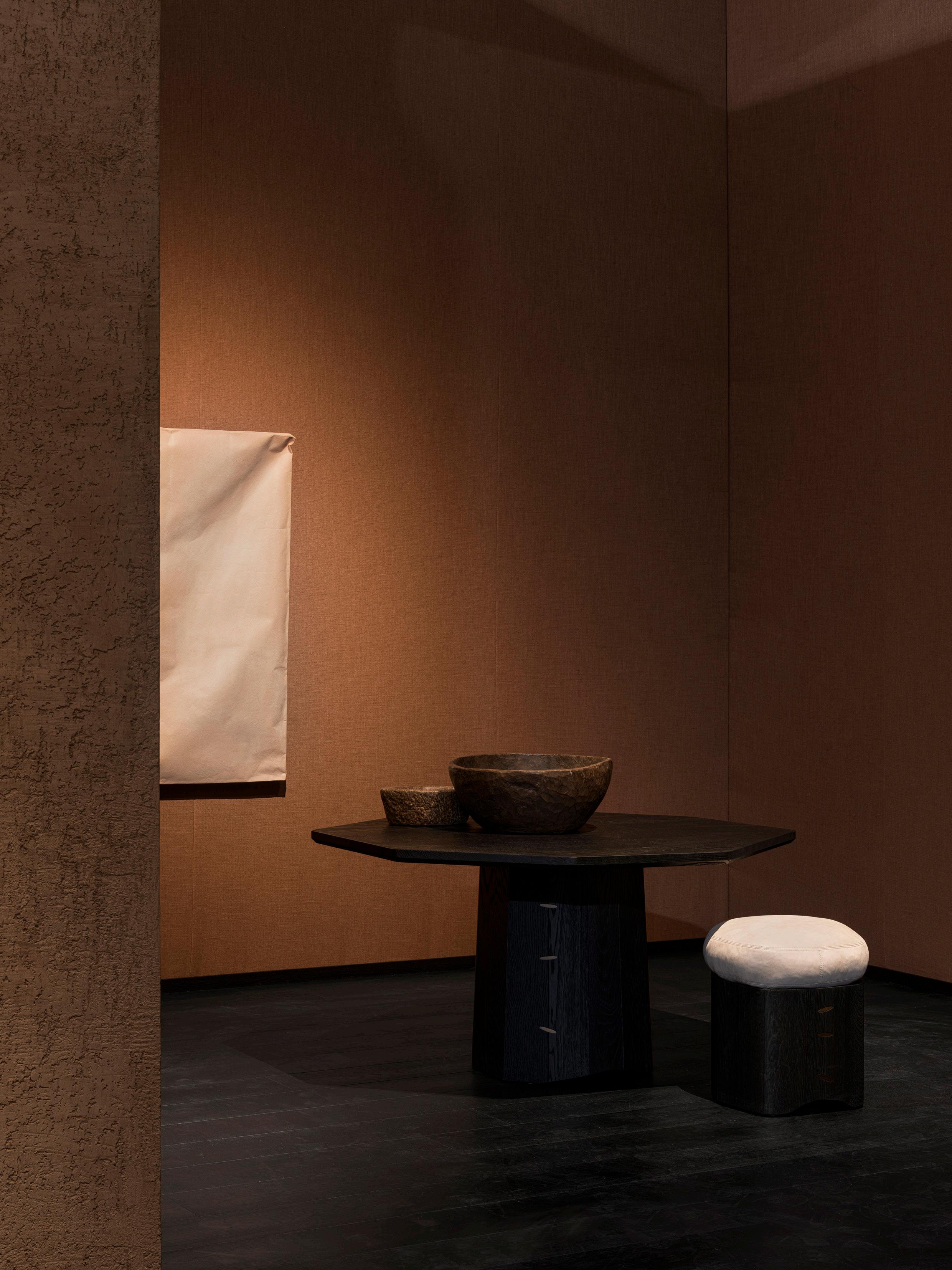
5 minute read
Design Voices: Studio KO
PHOTOGRAPHY Courtesy of Van Rossum INTERVIEW Sophie Lewis
HAND FIRST
The need for human touch in architecture, landscape and product design has guided the work of Paris-based Studio KO founders and architects Karl Fournier and Olivier Marty for the past 25 years. In a meeting of the minds, Dutch furniture company Van Rossum collaborated with the studio for their latest collection that seeks to master the beauty of imperfection, launched at Salone del Mobile.Milano 2025.

Congratulations on the Cairn collection—your first collaboration with Van Rossum. What sparked this partnership, and how familiar were you with Van Rossum’s dedication to handcrafting furniture?
Karl Fournier: We had already worked with Van Rossum's artistic director, Thomas Haarmann, who introduced us to the brand. We were immediately convinced by the quality of craftsmanship that emanated from their product, and the discussion then turned to a potential collaboration.
Human touch is central to your design approach, aligning with Van Rossum’s 40-year commitment to craftsmanship in their Dutch workshop. Could you expand on your shared design values and how they are reflected in this collection?
Olivier Marty: Local craftsmanship is very important to us. It's often what gets us started on a project, even in architecture: the materials, the culture, the traditions of the place in which we're setting up. Van Rossum is a company with extraordinary expertise, mastering the craft of woodworking to perfection. What binds us together is our love of fine materials and high-quality furniture.
Your work shows a deep respect for history, often reinterpreting it through what you call ‘resurgences’ to create a fresh perspective. Were there specific cultural or historical influences that shaped the Cairn collection?
Karl Fournier: This collection is inspired by a desire to incorporate irregular shapes, as found in nature. Nature constantly offers a perfect imperfection, which is more about irregularities than real defects, and which adds soul to an object. Another of our references was Kintsugi, the Japanese art of repairing broken objects by filling the cracks with gold. This poetic approach adds refinement to a rougher or simpler material. We express this reference to this ancestral technique by using the brass staples.
How did the design process embrace and highlight Van Rossum’s approach to furniture making?
Olivier Marty: Through this collaboration, we agreed to challenge them a bit by introducing the imperfections we mentioned earlier into their semi-industrial production. In this way, this collection offers a new facet to the brand. The collection stems from a shared interest in handicraft, which we aim to make more visible and accessible. Van Rossum's excellent expertise is the best way to achieve that “perfect imperfection” we were looking for.

This collection is inspired by a desire to incorporate irregular shapes, as found in nature. Nature constantly offers a perfect imperfection, which is more about irregularities than real defects, and which adds soul to an object.
– Karl Fournier
Texture is a hallmark of your work. How does the collection’s materiality reflect this?
Karl Fournier: Van Rossum has developed a sublime range of materials, including wood, metal and textile, which we worked with to create this collection. We used a dark brushed oak to create this irregular appearance structure with no right angles, embellished with brass staples that join the wooden planks together in the way of traditional joinery. We played with contrasts to achieve the vibrancy we desired, striking a balance between brutality and refinement.
However, we envisioned the collection with other finishes in mind, such as natural clear oak. It will depend on the context.
Your architecture embodies a sense of solidity, anchoring itself within the landscape. How does this architectural language translate into your product design?
Olivier Marty: Our creative approach is the same, whether it's a question of architecture or objects. For us, it's a whole that must imperatively interact. When we design a piece of furniture, we first think of its use and the details that make its relationship with the user fluid. The longevity of the pieces is also of prime importance, which is why we work as much as possible with high-quality materials and craftspeople who have mastered these materials. As for architecture, we strive to create timeless objects.
Your work is defined more by a conceptual framework than a signature aesthetic. How does this collection align with and expand on your broader portfolio?
Karl Fournier: We try not to repeat ourselves too much. Each project is different in its location, the client, the period, and your own taste evolution. For a furniture collection, it’s a little bit different. We can imagine these objects in several contexts, as long as you can adjust the finishes. We are not the kind of designers who only use our own designs in projects; on the contrary, we always love different mixtures and provenances. However, why not, from time to time and when it is appropriate, use furniture designed by us?
As you celebrate 25 years in practice, how has your creative partnership—both in life and work—evolved, and in what ways do you complement each other?
Olivier Marty: We are still getting to know each other twenty-five years later! We’re both full of surprises, and we have not finished yet! It saves us the trouble of boredom.
But to be more precise, I’m the serious guy who works like a monk/soldier, and Karl is more inspired, looking at things from further away. It is not immediately obvious to separate our roles, as we are both creatives. It would have been so much easier if one of us were a businessman!











